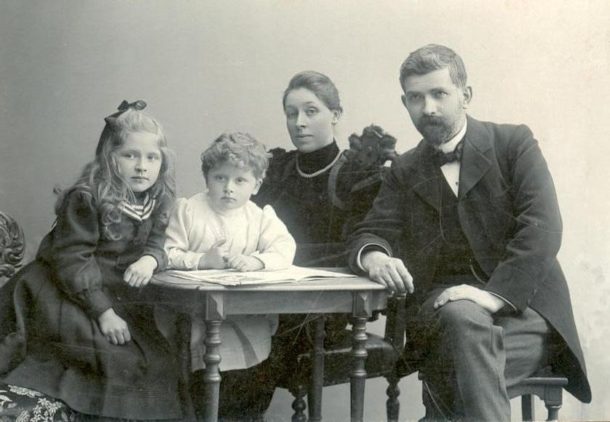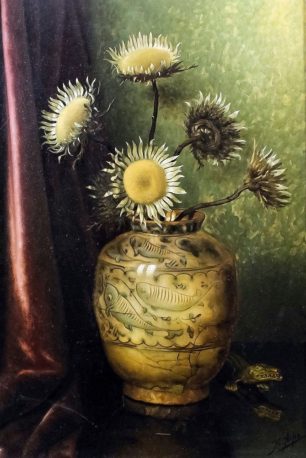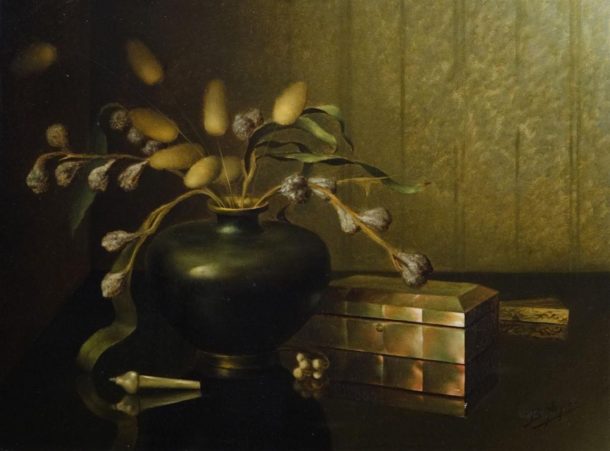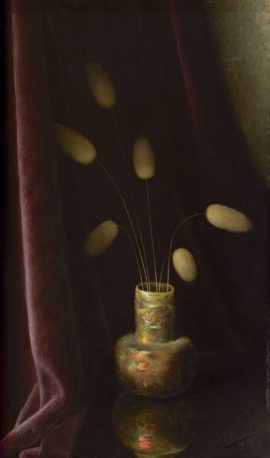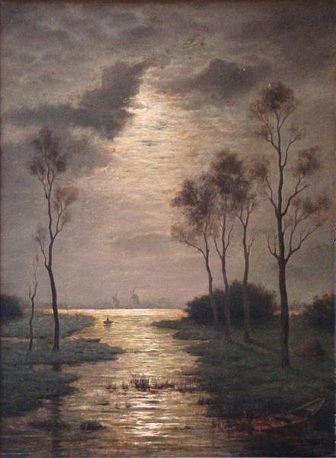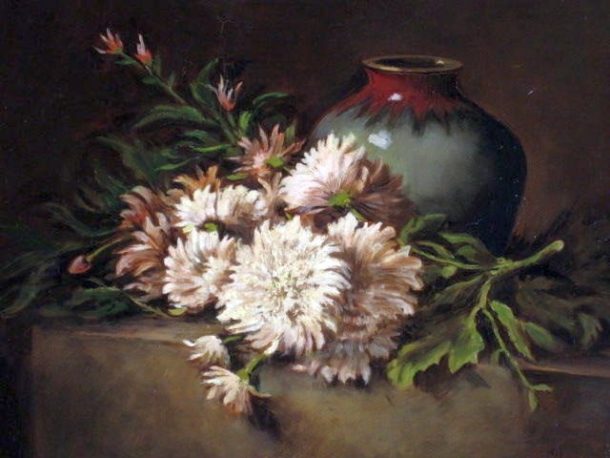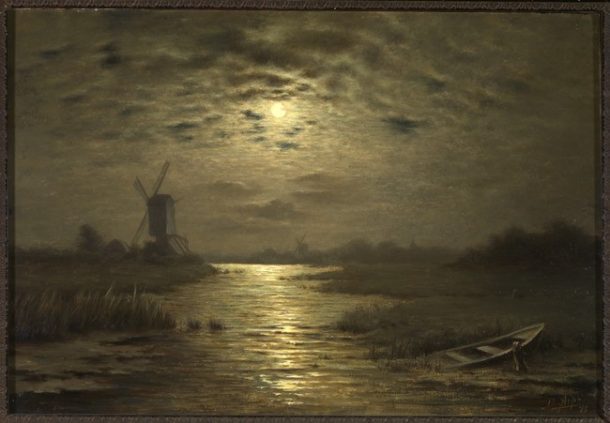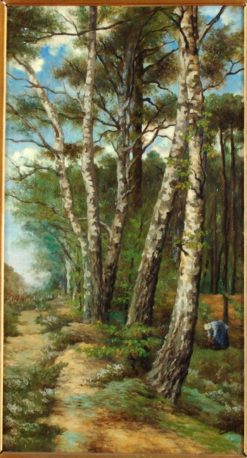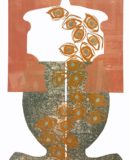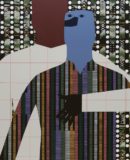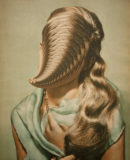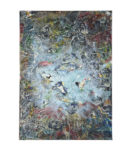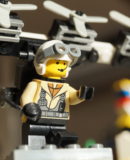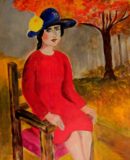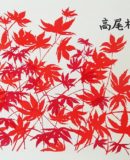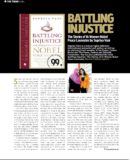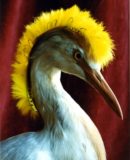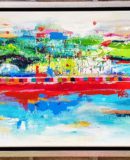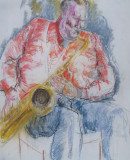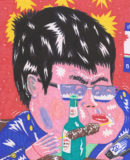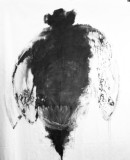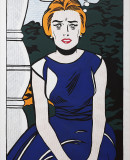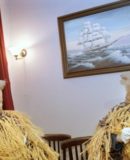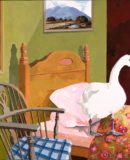World Fine Art Professionals and their Key-Pieces, 384 - Bernardus Arps
World Fine Art Professionals and their Key-Pieces, 384 – Bernardus Arps
Bernardus Arps is a painter of still lifes and landscapes at the end of the 19th / early 20th century. He belonged to the ‘Painters of the Veluwe Edge’ (Veluwezoom). There, in the wooded, rolling area north of the Rhine, he painted his most beautiful landscapes. He later returned to The Hague, where he mainly painted still lifes.
Bernardus mastered the technique down to the last detail. He also had a ‘golden touch’. He painted most of his landscapes in the period before 1906.
Wodans oaks, birches and heather landscapes
Arps painted the landscapes in daylight, at dusk and at night by moonlight. Wodans oaks, birches and heather landscapes were of particular interest to him. But farm life and the village scene, especially in the vicinity of Oosterbeek and Renkum, also had his attention. He developed his own style, with atmospheric colors and the scenes were quite detailed to a certain extent.
Still lifes
In 1906 Bernardus left with his wife Ans van Rossem and children for The Hague, where he focused on still life. For his still lifes, Arps had a varied assortment of objects, often in combination with draperies of beautiful fabrics and flowers in special vases.
Fifteen years later, in 1921, he returned to the Veluwe Edge. The journalist Johan Wesselink, a connoisseur of art in the 20th century in Gelderland, praised the works and in particular the still lifes of Bernardus Arps:
“On the surface, people tend to classify them as those still lifes of which the public likes to say ‘just real’, but on closer inspection we sometimes discover a fairy-tale beauty that captivates. Moreover, the technique can be admired in its precision. Remarkable is the fantastic light shine, which he gives in many still lifes. Then it is a glow from a lamp, then again a shine over the roundness of glass, sometimes over a patina, an oxidized metal, a flower.”
And he continues: “We see these gleams as mysterious nuclei in the darkness of the environment. There is the water lily, the peacock feather of astonishing subtlety, the still life of the poppy bulbs in an excavated bottle, on which a gold and mother-of-pearl patina has been laid, there are the books by lamplight, a jar of pickled tomatoes, a still life with pewter, a Chinese still life. They all breathe the same quiet atmosphere, all have the same spirit of meditation, all display the unique care and delicacy of the painting, the special qualities of the painter.”
Why had Bernardus gone to The Hague?
There are several reasons for this. The most important was that he needed a more extensive social network, more contacts with colleagues, critics, dealers and collectors. An additional reason was that his still lifes were more appreciated than his landscapes. The Hague was a city with many wealthy residents and on average more people were interested in buying art objects, including paintings. In addition, his younger brother Willem Arps, who also painted, supported him in the sale of his work in The Hague. Willem Arps ran the art dealership Arps & Co at Nobelstraat 4 in The Hague, with the status Hofdrukkerij (printing house of the court) and later purveyor to the Royal Court.
The reason he chose The Hague over Amsterdam – he had been a member of Arti et Amicitiae since 1900 – was because he was particularly attracted by the painters of the Hague School. He had already met representatives of the later generation of this School in Oosterbeek, including the painter Théophile de Bock, and he also counted himself among this generation. In the end, in his time in The Hague, Arps mainly made a name for himself as a painter of still lifes and less for his beautiful landscapes.
Member of the Pulchri Studio Painting Society
In March 1908 Arps registered with the Hague Painting Society Pulchri Studio. There he was welcomed with open arms. In the period up to 1924 he took part in at least 19 exhibitions. He usually offered one or two paintings per exhibition. An average of 130 paintings were submitted for these 19 exhibitions. In total, Arps participated with 26 paintings, 22 still lifes and only 4 landscapes.
Membership of Arti et Amicitiae and Pulchri Studio gave him the opportunity to present his paintings at exhibitions and offer them for sale. He made little use of the latter. He mainly relied on his contacts with renowned traders. Newspaper clippings from those years show that Arps was busy with this. In June 1904 there was a sales exhibition at the Art Halls Oldenzeel (Kunstzaalen Oldenzeel) in Rotterdam and in April 1912 an exhibition Artdealer Esher Surrey (Kunsthandel Esher Surrey), in Scheveningen. At Oldenzeel 43 paintings were offered, 35 landscapes and 8 still lifes. Esher Surrey involved 34 paintings and 12 watercolors, of which 26 were still lifes, 16 landscapes and 4 portraits.
Value of the paintings
The Oldenzeel catalog also mentions the prices of the paintings. The largest painting, by Castle Doorwerth, was offered for the respectable price of 700 guilders. This painting eventually ended up in the collection of the Municipality of Renkum, but was unfortunately lost in the war. A notebook by Arps from the period 1902 to 1918 has been preserved, which gives a good impression of the sale of his paintings to art dealers, private individuals and auctions. Renowned names are reviewed, such as those of Arti Scheveningen, Artibus Sacrum, d’Audretsch, Couvé Kon. Bazar, Gr. Could. Bazar, Ph. Goupil (very regularly) and Kunstliefde Utrecht.
The Larensche art dealership Amsterdam, Amsterdam Stedelijk Museum St. Lucas, Pulchri (regularly), Scholtens Groningen, J. C. Schüller and Unger and van Mens (regularly), Vermeulen are also mentioned. Occasionally there was interest from abroad (Buenos Aires, Berlin, Stuttgart and Vienna).
Bernardus Arps was particularly active in showing his work. He was a member of no less than three art associations. We already mentioned Arti et Amicitiae in Amsterdam and Pulchri Studio in The Hague. The third association was Pictura Veluvensis in Renkum with members such as Théophile de Bock, Ch. B. Dankmeijer, C. Kuypers and H. A. van Ingen. In December 1900 he had already become a member of the Maatschappij Arti et Amicitiae. In the period from 1901 to 1912 he took part in exhibitions nine times. To give you an idea: An average of 220 paintings per exhibition were submitted for these nine exhibitions. Arps offered one or two paintings per exhibition, a total of 11 paintings, of which 3 landscapes and 8 still lifes.
Back to the Veluwe Edge
In 1921 the Arps couple returned to the Veluwe Edge, to Oosterbeek. It was the place they had committed their hearts to. Bernardus Arps has hardly ever dated his paintings and it is therefore difficult to estimate in which period he made which paintings. It is therefore difficult to determine whether he was still very productive in the last period of his life, from 1921 until his death in 1938.
It seems that after 1924 – as far as we know the last time he participated in an exhibition at Pulchri Studio – he used the palette and brush less. He did, however, portray his wife Ans and himself twice, frontally and sitting in their beloved chairs. Bernardus and his wife Ans thoroughly enjoyed their beautiful home Bernanco at 111 Utrechtscheweg and their spacious backyard. They rarely traveled in later life.
Bernardus Arps died on September 26, 1938 in Oosterbeek; he was buried in the Moscowa cemetery in Arnhem. His wife survived him by six years; she died in the winter of 1944 in Leiden and was interred in her husband’s grave in 1946.
Courtesy of “Biography in a Nutshell.” by Charles E.S. Arps. And also Frederiek Pekelharing-de Planque, Ella Arps, Paul Arps and Dick van Veelen.
See also the book ‘The painters of the Veluwezoom’, https://bit.ly/3IQiNJd
Images
1) Bernardus Arps with his wife Ans van Rossem and children, 2 – 4) still lifes, 5) landscape, 6 – 7) still lifes, 8 – 10) landscapes
Disclaimer: The views, opinions and positions expressed within this guest article are those of the author Walter van Teeffelen alone and do not represent those of the Marbella Marbella website. The accuracy, completeness and validity of any statements made within this article are not guaranteed. We accept no liability for any errors, omissions or representations. The copyright of this content belongs to Walter van Teeffelen and any liability with regards to infringement of intellectual property rights remains with the author.

